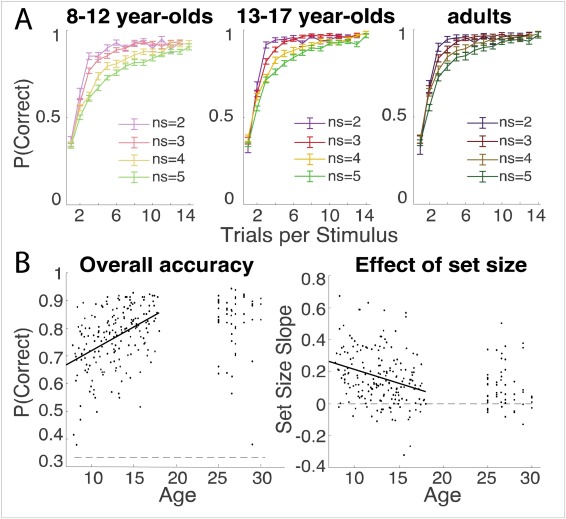Multiple neurocognitive systems contribute simultaneously to learning. For example, dopamine and basal ganglia (BG) systems are thought to support reinforcement learning (RL) by incrementally updating the value of choices, while the prefrontal cortex (PFC) contributes different computations, such as actively maintaining precise information in working memory (WM). It is commonly thought that WM and PFC show more protracted development than RL and BG systems, yet their contributions are rarely assessed in tandem. Here, we used a simple learning task to test how RL and WM contribute to changes in learning across adolescence. We tested 187 subjects ages 8 to 17 and 53 adults (25-30). Participants learned stimulus-action associations from feedback; the learning load was varied to be within or exceed WM capacity. Participants age 8-12 learned slower than participants age 13-17, and were more sensitive to load. We used computational modeling to estimate subjects’ use of WM and RL processes. Surprisingly, we found more protracted changes in RL than WM during development. RL learning rate increased with age until age 18 and WM parameters showed more subtle, gender- and puberty-dependent changes early in adolescence. These results can inform education and intervention strategies based on the developmental science of learning.
Sarah L. Master, Maria K. Eckstein, Neta Gotlieb, Ronald Dahl, Linda Wilbrecht, Anne G.E. Collins, Distentangling the systems contributing to changes in learning during adolescence, Developmental Cognitive Neuroscience (2019),
https://doi.org/10.1016/j.dcn.2019.100732, http://www.sciencedirect.com/science/article/pii/S1878929319303196
